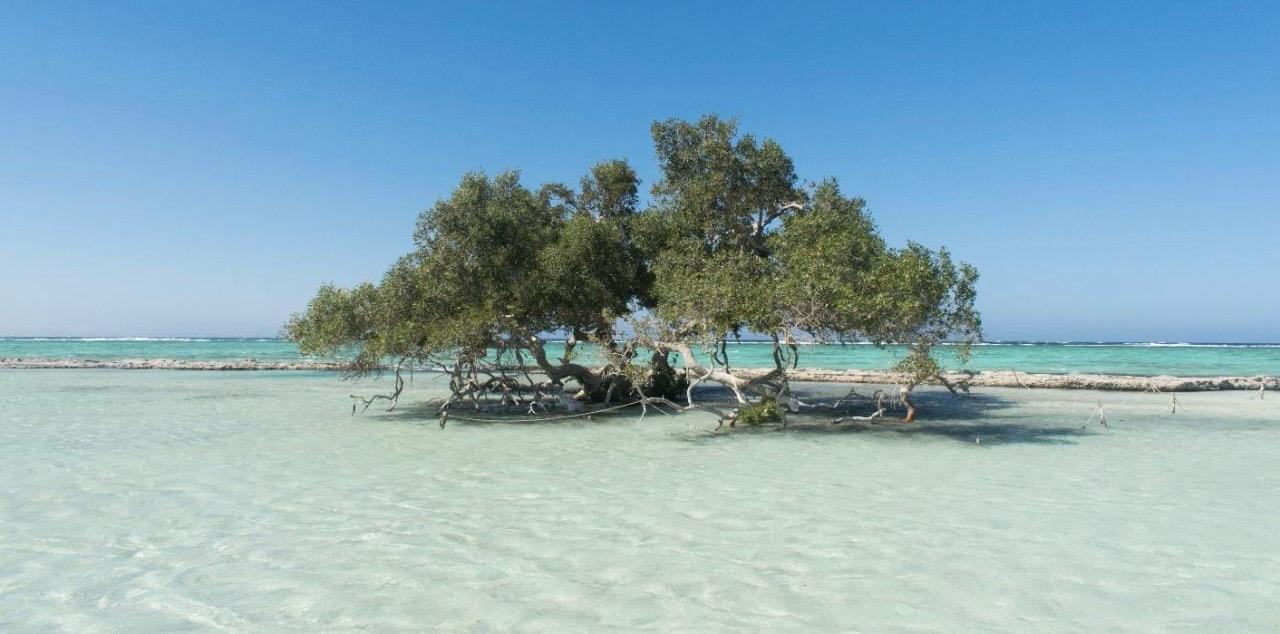Wadi al Gemal – Hamata
Home to astonishing land and sea wonders, Wadi al Gemal National Park, located south of Marsa Alam, is made up of coastal desert, mountains, valleys, mangroves, seagrass beds, coral reefs, and the Hamata archipelago. Here in the Eastern Desert, one can witness the impact that fresh water from valley streams have on a desert environment and the unique biodiversity in a desert terrain. The rich biodiversity of this protectorate draws visitors in to see the rare dugong feeding on sea grass, opulent coral reefs, and the world’s largest nesting colony of the sooty falcon. Famous costal sites include the stunning Sharm al Luli bay, Ras Baghdadi, and Ras Hankorab. Ancient Roman structures and an ancient Egyptian mine can also be visited here.
Red Sea Northern Islands
A fragile ecosystem makes the conservation of these islands, and their inhabitants, essential. The islands of Egypt’s Red Sea are known for their unique mangroves and coral reefs that act as a breeding site for multiple species of birds and endangered sea turtles. Dolphins are commonly seen playing offshore, and snorkelers and divers alike will be delighted by these charming waters. As you sail or cruise around these islands by boat, you will also encounter countless underwater treasures.
Elba National Park
The complexity of Elba’s ecosystems and microclimates makes it one of the most diverse protected areas in Egypt. With 22 islands, mangroves, coral reefs, coastal sand dunes, coastal desert plains, coastal marshes, and coastal mountains, Elba is an earthly gem residing in the southeast corner of Egypt’s Eastern Desert. One of the main attractions is Gabal Elba, a 1,437-meter-high mountain that enjoys copious amounts of rain that allow unique flora, likes mosses, succulents and ferns, to grow. Multiple rare bird species and sub-Saharan mammals, like the zoril, the aardwolf, and even the occasional Struthio ostrich, are seen in this national park. The endangered sea cow, the dugong, makes its way here to feed on sea grass beds.


